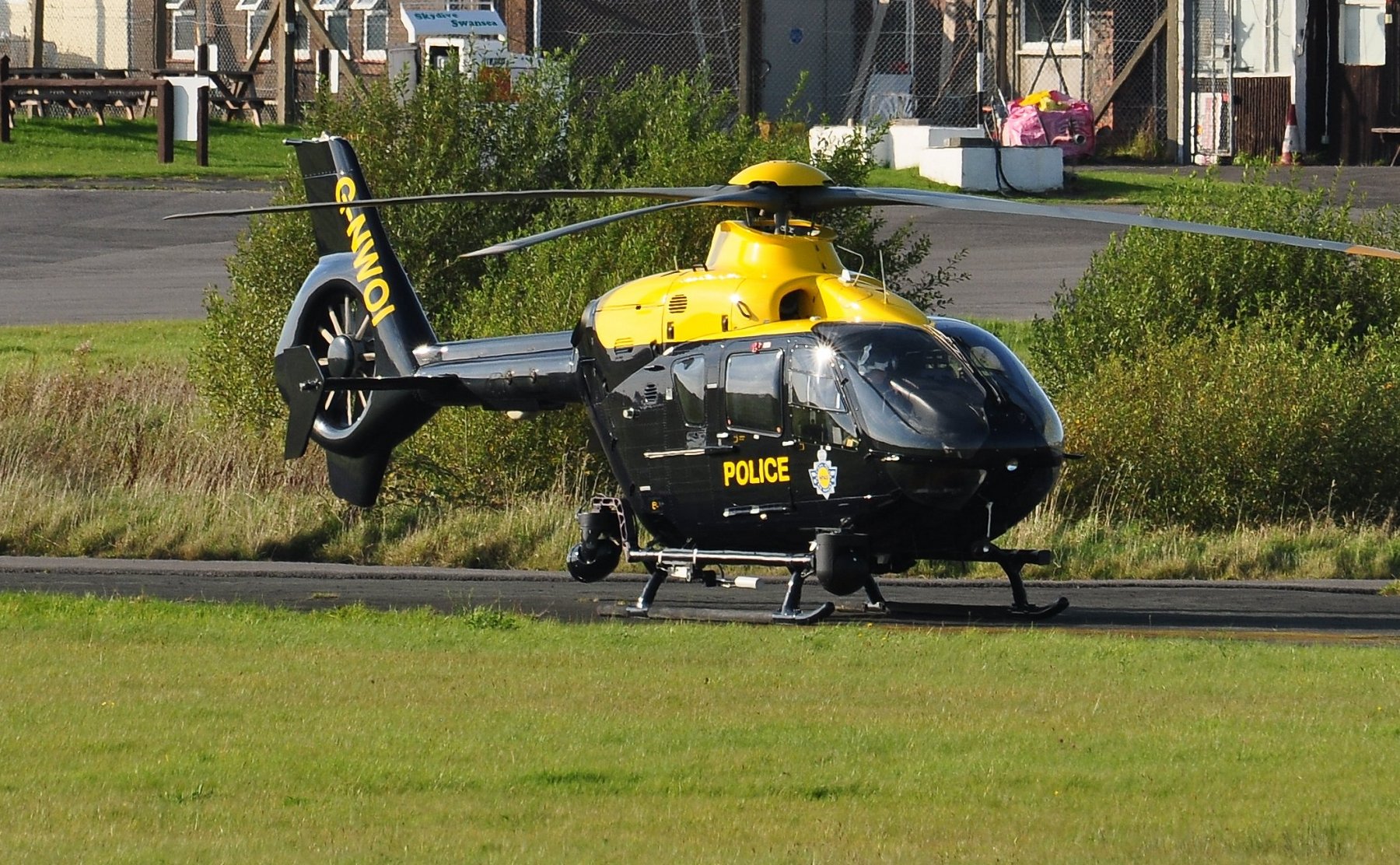I have been looking into this "UFO" case again over the weekend and now think that it wasn't BA9171 or another aircraft descending to Cardiff Airport or St Athan airlield nearby. Moreover, I think that the object wasn't flying, but it probably was a ground based heat source somewhere at the top of the Quantock Hills in Somerset (e.g., Wills Neck).
I started with the analysis of the Cardiff firework video (
#6), which I almost certainly was taken by the same camera on the same helicopter flight just six minutes earlier. After all, NPAS St Athan operates only one helicopter, EC135 G-NWOI.
Unlike the "UFO" video, the firework video was taken directly from the camera feed. Below is a frame from this video:

The bottom line displays the helicopter's coordinates, the azimuth and elevation of the camera (relative the helicopter's frame?) and the date and time. The date is wrong by one day, as the fireworks were on September 17 after 9 pm BST (UTC+1), but the time (Z means UTC) is about right.
The line above it displays the target's coordinates, its altitude (above ground?) and the distance to it.
The scale on the left side of the display window shows the camera elevation, that at the bottom shows the azimuth.
The scale on the top is a compass, which is doubled by the arrow at the bottom right corner.
I have not found the meanings of the remaining indicators.
I have added this frame to Google Earth by fitting the distinct building, including tower blocks in the middle and the Celsa Steel Works in the upper right corner (note the hot pipework above the roof):

The camera was placed at the helicopter's location at the time. There were four parameters to adjust the fit, which resulted in the following values:
camera
- altitude: 450.00 m
- heading: 92.25°
- tilt: 86.00°
horizontal FOV: 4.25°
Untitled placemark (yellow pin) corresponds to the target coordinates and coincide well with the camera cross-hair (the tip of the pin is obscured by the 3D buildings. The distance to this placemark coincides well with the displayed value of 6429 meters. Note that the target coordinates change a bit during this short video.
The camera heading coincides with the compass reading, suggesting the compass was working correctly during this flight.
The elevation of video frame fit (tilt - 90° = -4°) is within one degree with the camera elevation reading of -4.9°, but this is probably coincidental.
The "UFO" video begins about 6 minutes after the fireworks video ends. In between the helicopter moved by about 6 miles, travelling with an average speed of 60 mph or one third of the cruise speed of this helicopter type. The "UFO" video is taken from the monitor by a phone camera and comprises two segments separated with a 3-minute gap. The image is distorted with the top part of the camera display being cut off.
The target coordinates remain unchanged during the entire video, suggesting that camera does not track the object but has frozen the location of the last meaningful target (probably something other than the object). The elevation and azimuth readings change greatly, which probably reflects the rotation of the helicopter itself.
In contract, the compass direction, where it can be seen, remains largely unchanged around 163°. The compass direction, demonstrated above to be correct, differs greatly from the direction of landing approach to the Cardiff airport (the helicopter was flying over the airport at the time). This direction also differs by about 15° from the direction to the "frozen" target location and points to the Quantock Hills beyond the Somerset coast of the Bristol Channel. Their highest summit Wills Neck is only 1261 ft (384 m) high (that is lower that the deduced helicopter's altitude), but would appear above the horizon for the said altitude. It seems possible that, in the conditions of poor visibility, a heat source near the summit could be mistaken for a flying object by a FLIR camera operator.


 G-NWOI
G-NWOI
